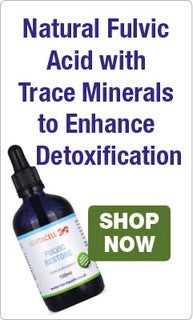While there are dissenting voices on most topics in the field of natural health, you will struggle to find anyone who does not recommend maintaining high levels of vitamin D.
This can be achieved through diet, time spent outdoors in the sun, the use of supplements or a combination of all three.
Vitamin D exists in two forms: vitamin D2 and vitamin D3. In this blog, we aim to outline the key differences between the two.
The Many Benefits of Vitamin D
Vitamin D is essential for several functions of the human body, particularly relating to bone health and immune performance.
In addition, it contributes to the absorption and utilisation of both calcium and phosphorus, healthy blood calcium levels, the maintenance of normal muscle function and teeth, and the vital process of cell division.
It’s as simple as this: everybody needs vitamin D. Which is where the Vitamin D2 vs D3 debate really heats up.
Sources of Vitamin D2
Vitamin D2 is produced by plants exposed to UV light.
Also known as ergocalciferol, it is added to foods such as dairy-free milks (almond, soy, coconut) to bolster their nutritional profile.
Bread is also regularly fortified with vitamin D2, while mushrooms are a natural source.
Vitamin D3: It Comes From the Sun
Vitamin D3 is the most biologically available form, produced when our skin is exposed to sunlight. In the reactive process which takes place, cholesterol is converted into vitamin D3, meaning – in theory – we need do no more than spend some time outdoors to get all we need.
A recent study by the Polytechnic University of Valencia (UPV) estimated the length of time required to generate 1,000 i.u. of vitamin D from the sun without risking sunburn.
Researchers learned that during spring and summer months an individual can make 1,000 i.u. in just 10 minutes. In winter, the length of time was 130 minutes for the same amount of vitamin D, while in fall 30 minutes was adequate.
Bearing in mind the study assessed respondents in Spain, which benefits from a far warmer climate than we do in Britain.
Moreover, each person’s ability to make vitamin D differs depending on skin type, sun exposure and age. Nonetheless, the study shows how easy it is to get vitamin D the natural way – providing weather conditions are adequate.
To put that number into context, 1,000 i.u. is 2.5 times times the UK recommended daily value. 400 i.u., or 10 micrograms, is said to be the amount needed to protect bone and muscle health.
With that being said, many global bodies believe the figure should be far higher. The Vitamin D Council, for instance, advise people to get 5,000 i.u. of vitamin D per day, while the Endocrine Society recommend 2,000 i.u.
Vitamin D2 vs D3 Has a Clear Winner
A recent study by the University of Surrey showed that vitamin D3 is twice as effective at raising the serum biological marker of vitamin D status than D2.
According to senior researcher Susan Lanham-New, PhD, “the discovery will revolutionise how the health and retail sector views vitamin D… and help people make a more informed choice about what they can eat or drink to raise their levels.”
It is not the only trial which illustrates vitamin D3’s superiority. Of particular note was the 2014 review of over 50 studies showing that D3 offered a substantial decrease in overall mortality, while D2 did not.
Another study from 2010 concluded that “D3 should be the preferred treatment option when correcting vitamin D deficiency,” citing its greater potency and lower cost.
Plainly, vitamin D3 is the type which provides the most benefits for the human body. Because very few foods (fatty fish, egg yolks) naturally contain vitamin D in either form, supplements are the best way forward.
Indeed, Public Health England suggest all Brits should consider taking a daily supplement during autumn and winter (October-March). In supplement form, D3 is derived from animal products – usually sheep’s wool – while D2 is derived from plant sources.
Conclusion
If you can rely on the sun to get all the vitamin D you need, great! If not, you’re well advised to top up your levels with a high-quality supplement. And as this article illustrates, there’s only one form you should consider – and it’s not D2.




























Leave a comment